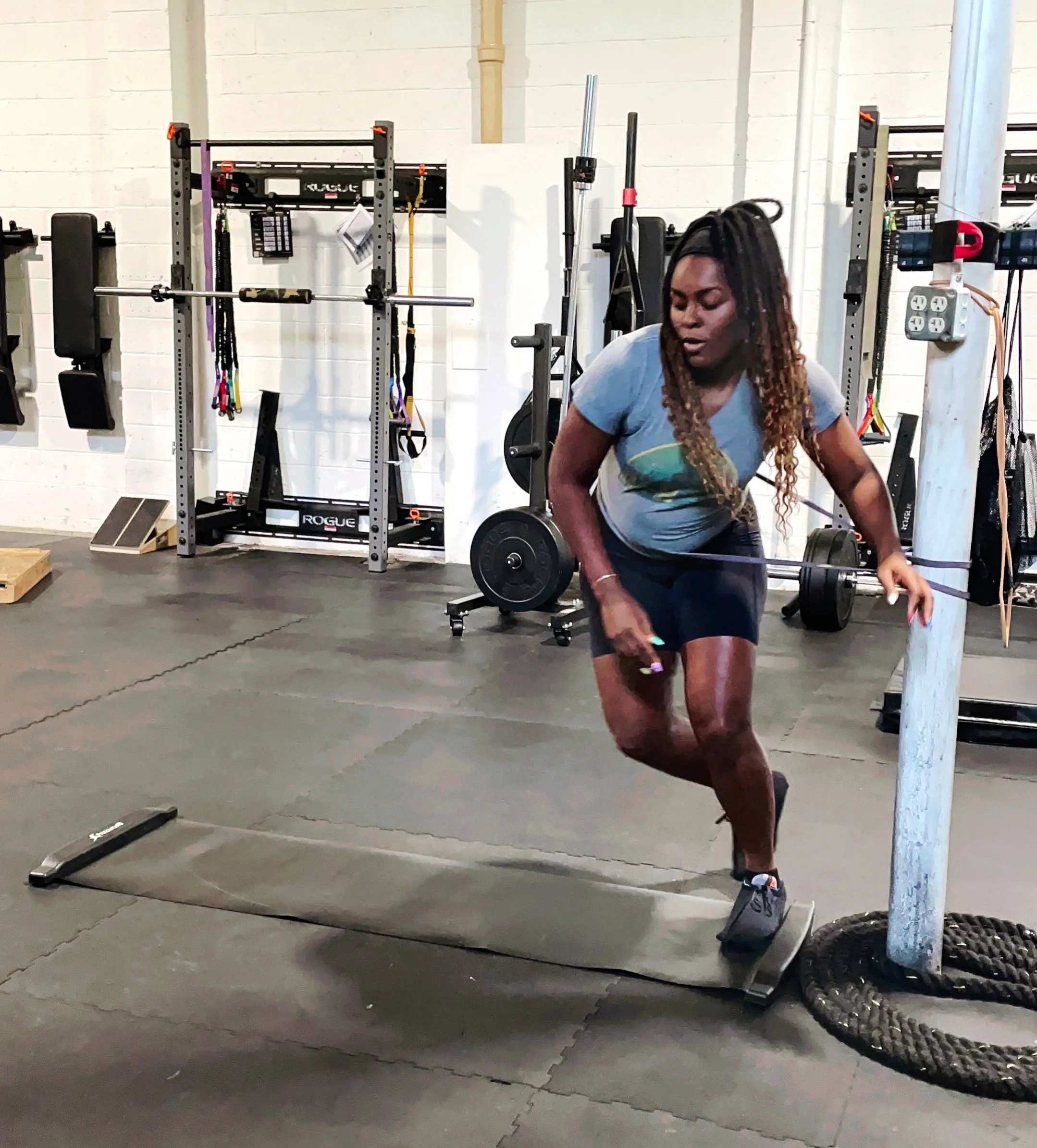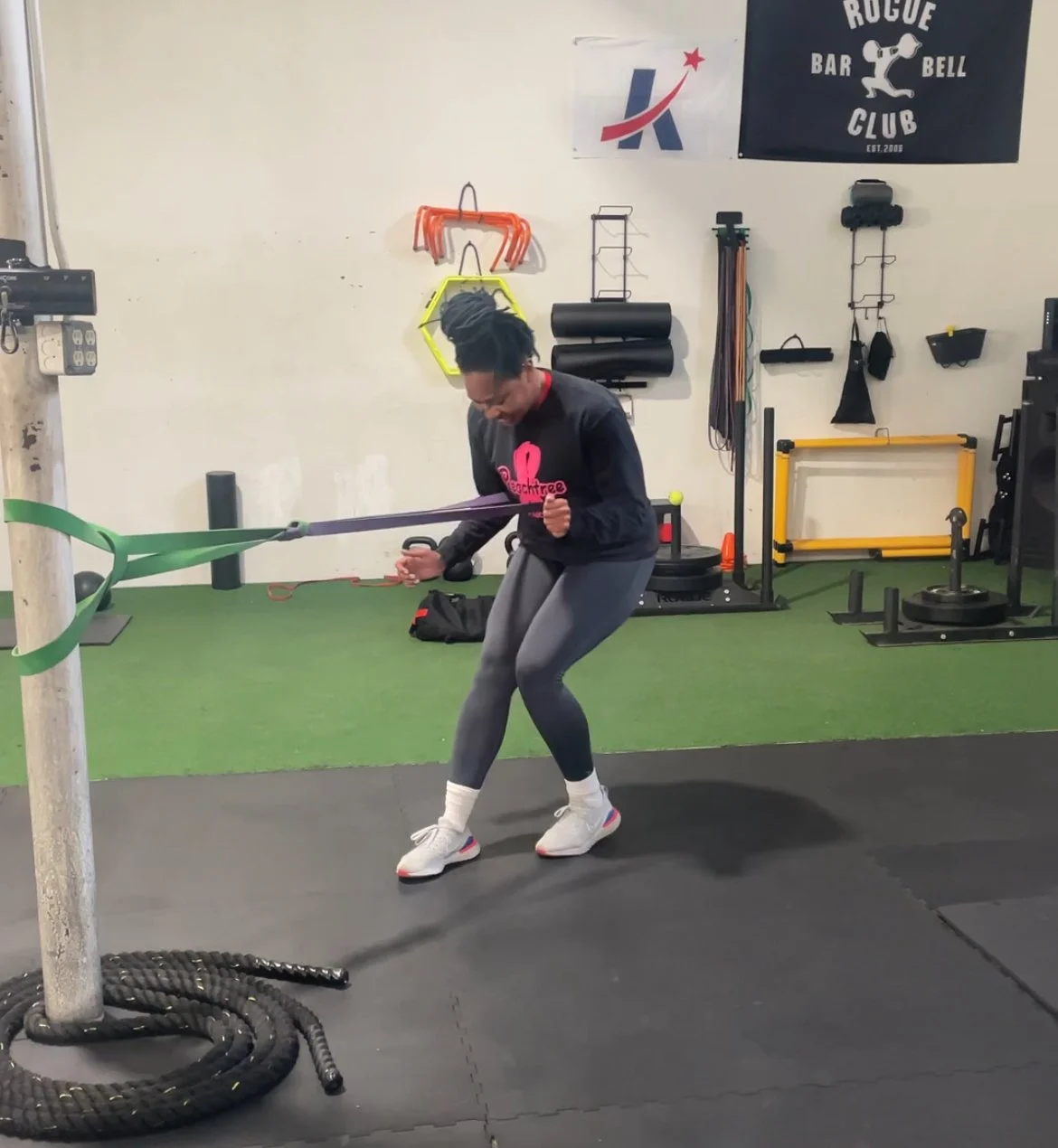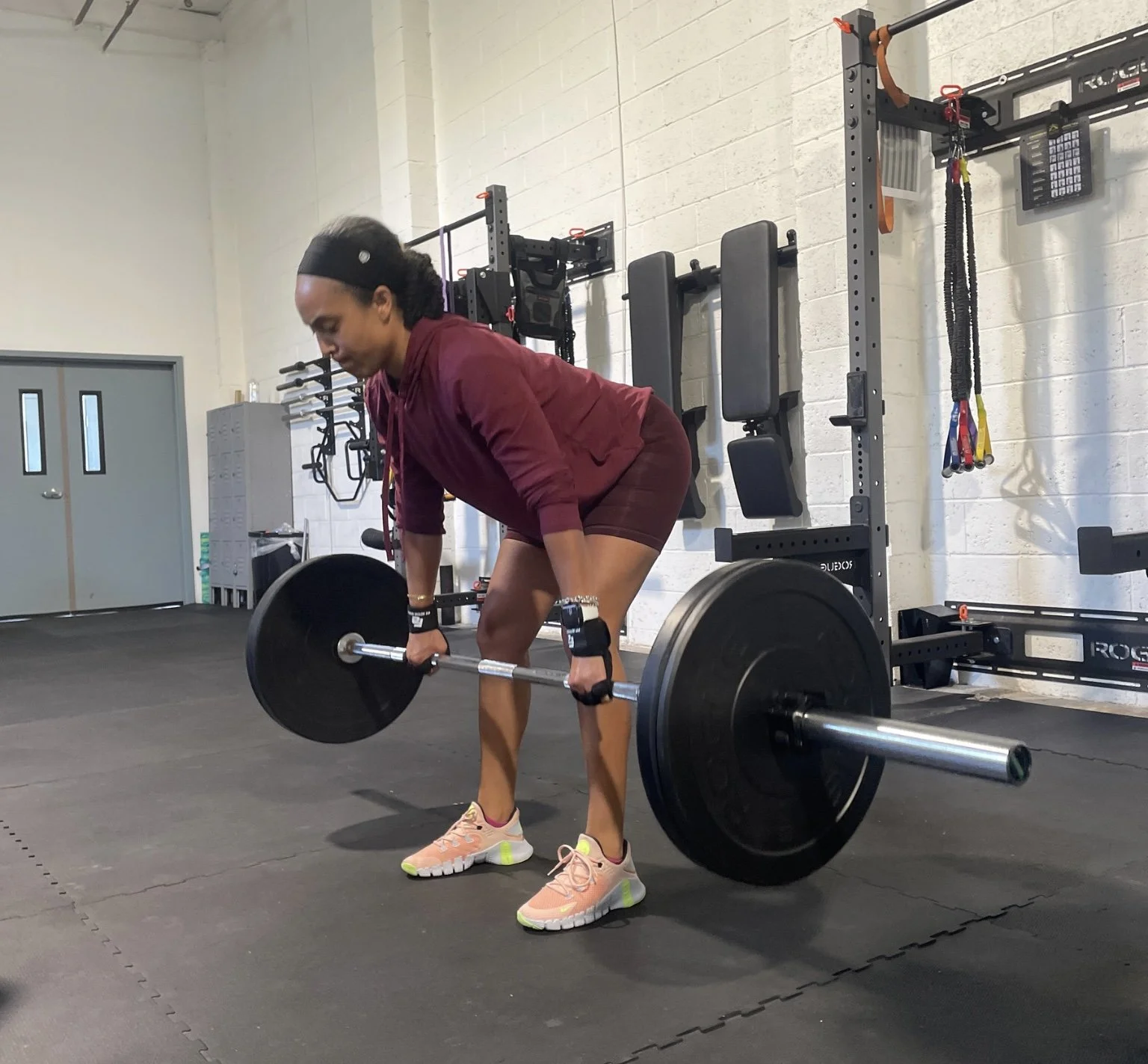
The Foundation of Fitness: The Role of Stability in Your Wellness Journey
In the world of fitness, there’s a buzzword that often gets thrown around – stability. But what does it really mean, and why is it so crucial for your overall health and fitness? Stability is more than just keeping your balance; it’s the foundation upon which all movement is built. Whether you’re a seasoned athlete or just starting your fitness journey, understanding the importance of stability can be a game-changer. So, let’s dive deeper into what stability is, why it matters, and how you can improve it to enhance your wellness journey.
What is Stability?
At its core, stability refers to the body’s ability to maintain proper alignment and control during movement or while maintaining a particular posture. It involves a complex play between muscles, joints, and the nervous system. Think of stability as the glue that holds everything together – without it, even the simplest of movements can become challenging and inefficient.
The Importance of Stability
1. Injury Prevention: One of the primary roles of stability is to protect your body from injury. When your muscles and joints are stable, they’re better equipped to handle the stresses and strains placed on them during physical activity. This reduces the risk of sprains, strains, and other common injuries.
2. Improved Performance: Whether you’re lifting weights, running, or playing sports, stability is essential for optimal performance. It allows you to move more efficiently, generate more power, and maintain proper form, leading to better results and fewer setbacks.
3. Enhanced Balance and Coordination: Balance and coordination are fundamental aspects of physical fitness, and stability plays a key role in both. By improving your stability, you can enhance your ability to balance on one leg, change direction quickly, and move gracefully in any environment.
4. Functional Movement: Stability is not just about looking good in the gym; it’s about moving better in everyday life. Whether you’re bending down to tie your shoes or carrying groceries up the stairs, stability helps you perform these tasks safely and efficiently.
How to Improve Stability
Now that we understand why stability is so important, let’s explore some strategies for improving it:
1. Core Strengthening: Your core muscles – including your abdominals, obliques, and lower back – play a crucial role in stabilizing your spine and pelvis. Incorporate exercises like planks, Russian twists, and bird dogs into your routine to strengthen these muscles and improve overall stability.
2. Balance Training: Balance exercises challenge your body to maintain stability in various positions, helping to improve proprioception (awareness of your body’s position in space) and coordination. Try standing on one leg, using a balance board, or practicing yoga poses like tree pose and warrior III.
3. Functional Movements: Focus on compound exercises that mimic real-life movements, such as squats, lunges, and deadlifts. These exercises not only strengthen multiple muscle groups simultaneously but also improve stability and coordination in functional patterns.
4. Proprioceptive Training: Proprioception refers to your body’s ability to sense and respond to stimuli within your environment. Proprioceptive training involves exercises that challenge your body’s awareness and control, such as stability ball exercises, foam rolling, and agility drills.
5. Mind-Body Practices: Practices like tai chi, qigong, and Pilates emphasize mindful movement and body awareness, making them excellent tools for improving stability and balance.
Conclusion
Stability is the cornerstone of physical fitness, influencing everything from injury prevention to athletic performance to everyday movement. By prioritizing stability training in your fitness routine, you can build a strong foundation that supports your health and wellness goals for years to come. So, whether you’re hitting the gym, practicing yoga, or simply going about your daily activities, remember the importance of stability and the impact it can have on your overall well-being.

Guide to Injury Prevention: Stay Strong, Stay Safe!
Staying active is crucial for both physical health and mental well-being. Whether you're into sports, hitting the gym, or just enjoy being active, preventing injuries should be a top priority. Here are some essential tips for injury prevention that every fitness level should know:
1. Warm-Up and Cool Down Properly: Before diving into any physical activity, it's essential to warm up your muscles and prepare your body for the upcoming exertion. A proper warm-up increases blood flow to your muscles, making them more flexible and less prone to injury. Likewise, cooling down after exercise helps your body gradually return to its resting state and prevents muscle soreness.
2. Listen to Your Body: It's essential to pay attention to any signs of discomfort or pain during physical activity. Pushing through pain can lead to serious injuries. If something doesn't feel right, take a break, and assess the situation. Ignoring pain signals can escalate injuries and lead to longer recovery times.
3. Use Proper Form: Whether you're lifting weights, running, or playing sports, using proper form is crucial for injury prevention. Incorrect form puts unnecessary stress on your muscles and joints, increasing the risk of injury. If you're unsure about the correct technique, don't hesitate to ask a coach, trainer, or experienced friend for guidance.
4. Gradually Increase Intensity: While it's tempting to push yourself to the limit, especially when you're young and full of energy, it's essential to progress gradually. Rapidly increasing the intensity or duration of your workouts can overwhelm your body and lead to overuse injuries like stress fractures or tendonitis. Instead, aim for incremental improvements over time.
5. Cross-Train: Engaging in a variety of activities can help prevent overuse injuries by giving different muscles and joints a chance to rest and recover. For example, if you're a runner, incorporate strength training, yoga, or swimming into your routine to build overall strength and flexibility.
6. Stay Hydrated and Fuel Your Body: Proper hydration is essential for maintaining optimal performance and preventing injuries. Dehydration can lead to muscle cramps, fatigue, and impaired cognitive function, increasing the risk of accidents or injuries. Additionally, fueling your body with nutritious foods provides the energy and nutrients needed for muscle repair and recovery.
7. Get Adequate Rest and Recovery: Rest is just as important as exercise when it comes to injury prevention. Your body needs time to repair and rebuild muscle tissue after strenuous activity. Aim for at least 8 hours of quality sleep each night, and incorporate rest days into your workout routine to allow your body to recover fully.
8. Wear Proper Gear and Equipment: Whether you're playing sports or hitting the gym, wearing the right gear can help protect you from injury. Invest in supportive athletic shoes that fit well and provide adequate cushioning and stability for your chosen activity.
9. Don't Skip the Warm-Up or Cool Down: These are crucial parts of any workout routine. The warm-up helps prepare your muscles and joints for exercise, reducing the risk of injury, while the cool down helps prevent stiffness and soreness by gradually bringing your heart rate and breathing back to normal.
10. Listen to Your Body: If something doesn't feel right during a workout, don't ignore it. Pushing through pain or discomfort can lead to more serious injuries. Instead, take a break, assess the situation, and seek help if needed.
Incorporating these injury prevention tips into your fitness routine can help you stay strong, healthy, and injury-free as you continue to pursue your fitness goals. Remember, prevention is always better than cure, so prioritize safety and listen to your body every step of the way.

Unleashing Synergy: The Power of Integrating Strength and Conditioning
Optimizing Strength: The Foundation of Performance🏋️♀️🏋️♂️
Strength serves as the bedrock upon which athleticism is built. By engaging in regular strength training exercises, individuals can increase muscle mass, enhance bone density, and improve overall functional capacity. Traditional resistance training methods, such as weightlifting, bodyweight exercises, and resistance bands, stimulate muscle growth and improve muscular strength, endurance, and power.
However, the benefits of strength training extend far beyond mere muscle hypertrophy (muscle growth). By progressively overloading muscles through strategic programming, individuals can enhance neuromuscular coordination, improve joint stability, and mitigate the risk of injury during physical activity. Moreover, increased muscular strength translates into improved performance across a wide range of athletic endeavors, from sprinting and jumping to lifting and throwing.
Elevating Conditioning: The Engine of Endurance and Vitality🏃🏃♀️
While strength lays the foundation, conditioning acts as the engine driving sustained performance and vitality. Conditioning encompasses various modalities aimed at enhancing cardiovascular fitness, muscular endurance, agility, and metabolic efficiency. Endurance training, which includes activities like running, cycling, and swimming, improves aerobic capacity, boosts cardiovascular health, and enhances overall stamina.
High-intensity interval training (HIIT), a cornerstone of conditioning programming, alternates periods of intense exertion with brief recovery intervals, optimizing both aerobic and anaerobic energy systems. HIIT not only improves cardiovascular fitness but also promotes fat loss, accelerates metabolism, and enhances insulin sensitivity, making it a potent tool for overall health and fitness.
Synergistic Integration: Maximizing Performance and Well-Being🤯
The true magic lies in the seamless integration of strength and conditioning, where the sum is greater than its individual parts. By strategically combining resistance training with conditioning exercises, individuals can achieve a harmonious balance of strength, power, endurance, and agility, thereby optimizing athletic performance and overall health.
For instance, incorporating plyometric drills or agility exercises into a strength training routine enhances neuromuscular coordination, explosiveness, and athletic prowess. Similarly, integrating strength exercises into conditioning circuits or HIIT workouts amplifies muscular endurance, metabolic demand, and calorie expenditure, leading to accelerated fat loss and improved body composition.
Strategies for Synergistic Training📝
To harness the full potential of synergistic training, individuals should adopt a strategic and balanced approach. This entails designing comprehensive training programs that connects both strength and conditioning components, with careful attention to exercise selection, volume, intensity, and progression.
Periodization, the systematic manipulation of training variables over time, plays a pivotal role in optimizing performance and preventing plateaus. By cycling through phases of strength emphasis, conditioning focus, and recovery, individuals can stimulate continuous adaptation, lower overtraining risks, and achieve peak performance levels.
In conclusion, the integration of strength and conditioning represents a potential strategy for maximizing performance, health, and vitality. By leveraging the synergistic benefits of both disciplines, individuals can unlock their full athletic potential, enhance overall well-being, and embark on a transformative journey towards a stronger, fitter, and more resilient self.

The Science Behind High-Intensity Interval Training (HIIT) for Optimal Fitness
In the world of fitness, few trends have gained as much popularity and acclaim as High-Intensity Interval Training (HIIT). This dynamic exercise approach combines short bursts of intense activity with periods of rest or lower-intensity exercise, promising efficient workouts with impressive results. But what exactly makes HIIT so effective, and how can you harness its power for your own fitness journey? Let's dive into the science behind HIIT.
HIIT workouts typically involve alternating between short periods of maximum effort, often around 20-30 seconds, and brief recovery periods, typically lasting 10-30 seconds or more. This cycle is repeated for a total workout duration ranging from as little as four minutes to around 30 minutes, depending on fitness levels and specific routines.
One of the key reasons behind the effectiveness of HIIT lies in its ability to elevate the heart rate and maximize calorie burn in a relatively short amount of time. During the high-intensity intervals, the body's demand for oxygen increases significantly, leading to a state known as excess post-exercise oxygen consumption (EPOC) or the "afterburn effect." This phenomenon causes the body to continue burning calories at an elevated rate even after the workout is completed, contributing to greater overall energy used compared to steady-state cardio exercises.
But the benefits of HIIT extend beyond cardiovascular health. This form of exercise has also been found to be highly effective for fat loss and muscle building. HIIT stimulates the production of human growth hormone (HGH), a key hormone involved in metabolism, muscle growth, and fat burning. The short bursts of intense activity signal the body to prioritize muscle preservation while targeting stored fat for fuel, making HIIT a potent tool for both fat loss and muscle retention.
Furthermore, HIIT workouts can be tailored to target specific muscle groups or incorporate a variety of exercises to promote full-body strength and conditioning. By combining strength training movements such as squats, lunges, push-ups, and burpees with high-intensity intervals, HIIT provides a comprehensive workout that challenges multiple muscle groups simultaneously, leading to greater muscle activation and functional strength gains.
Another advantage of HIIT is its versatility and accessibility. HIIT workouts can be performed with minimal equipment, making them suitable for home workouts, outdoor sessions, or even hotel rooms while traveling. Additionally, HIIT can be adapted to accommodate individuals of all fitness levels, with modifications available to adjust the intensity and duration of the intervals based on individual goals and abilities.
When incorporating HIIT into your fitness routine, it's essential to prioritize proper form and technique to minimize the risk of injury. While the intensity of HIIT can be demanding, listening to your body and allowing for adequate rest and recovery between sessions is crucial for long-term progress and injury prevention.
In conclusion, the science behind HIIT reveals it to be a highly effective and efficient approach to fitness with numerous benefits, including improved cardiovascular health, enhanced fat loss, muscle building, and versatility. By incorporating HIIT workouts into your exercise regimen, you can maximize your time in the gym and achieve your fitness goals more effectively than ever before.

Gut Health: Your Secret Weapon for Fitness Success
Are you into fitness or thinking about getting more active? Taking care of your gut health can make a big difference in how you feel and perform. Let's break it down in simple terms:
1. Better Absorption of Good Stuff: Your gut helps your body soak up all the good stuff from your food—like the vitamins, minerals, and energy it needs to keep you going strong during workouts and throughout the day.
2. Stronger Immune System: Think of your gut as your body's defense headquarters. A healthy gut keeps the bad guys out and helps your immune system stay strong, so you can stay on track with your fitness goals without getting sidelined by sickness.
3. Faster Recovery: When you push yourself in workouts, your muscles need time to recover. A healthy gut can help speed up that recovery process, so you can bounce back quicker and get back to doing what you love.
4. Keeping Inflammation in Check: Ever felt sore for days after a tough workout? That's inflammation at work. A happy gut helps keep inflammation under control, so you can recover faster and get back to crushing your fitness goals.
5. Mood Boost: Believe it or not, your gut can affect your mood too! A healthy gut means more of those feel-good chemicals in your brain, which can help keep stress levels low and motivation high—perfect for staying on track with your fitness routine.
6. No More Tummy Troubles: Bloating, gas, and stomachaches can seriously cramp your style. But with a healthy gut, you can say goodbye to those uncomfortable digestive issues and focus on feeling your best during workouts.
7. Setting Up for a Healthy Future: Taking care of your gut now isn't just about feeling good today—it's about setting yourself up for a lifetime of health and wellness. A happy gut now means a lower risk of health problems down the road, so you can keep doing all the things you love for years to come.
How to Take Care of Your Gut:
- Eat Probiotic Foods: Think yogurt, kefir, and sauerkraut—these foods are packed with good bacteria that can help keep your gut healthy.
- Load Up on Fiber: Fruits, veggies, whole grains, and beans are all great sources of fiber, which feeds the good bacteria in your gut.
- Stay Hydrated: Drink plenty of water to keep things moving smoothly in your gut.
- Find Ways to Chill: Stress isn't good for your gut, so find ways to relax and unwind—whether it's through yoga, meditation, or just chilling with friends.
- Cut Back on Junk: Processed foods and sugary snacks can mess with your gut, so try to limit these and focus on whole, nutritious foods instead.
In short, taking care of your gut health is super important for feeling your best and rocking your fitness goals. So, eat those veggies, drink that water, and keep moving—your gut will thank you for it!

Strength & Conditioning vs. CrossFit: Exploring Fitness Similarities
Strength and conditioning (S&C) and CrossFit share several similarities, as they both focus on improving overall fitness, strength, and performance. Here's an explanation of some key similarities between the two:
1. Functional Movements: Both strength and conditioning programs and CrossFit prioritize functional movements, which are exercises that mimic real-life activities and help improve overall athleticism. Squats, deadlifts, presses, and Olympic lifts are common examples of functional movements that are frequently incorporated into both S&C and CrossFit workouts.
2. Varied Workouts: Both S&C and CrossFit emphasize variety in workouts to prevent plateaus, keep participants engaged, and target different muscle groups. This variety helps to improve overall fitness by challenging the body in different ways and reducing the risk of overuse injuries.
3. High Intensity: Both S&C and CrossFit workouts often involve high-intensity intervals or circuits that combine strength training with cardiovascular conditioning. These intense workouts are designed to improve both strength and endurance, leading to increased overall fitness and performance.
4. Emphasis on Strength: While CrossFit is known for its emphasis on functional movements performed at high intensity, it also places a significant focus on strength development. Similarly, strength and conditioning programs prioritize strength training as a foundational component of overall fitness, aiming to improve maximal strength, power, and muscular endurance.
5. Community and Support: Both S&C facilities and CrossFit gyms foster a sense of community and support among participants. Group classes, team workouts, and camaraderie among members are common features of both types of training environments, creating a supportive atmosphere that can enhance motivation and adherence to a fitness program.
6. Goal-Oriented Training: Whether in S&C or CrossFit, participants often have specific fitness goals they are working towards, whether it's improving athletic performance, building muscle, losing weight, or enhancing overall health. Both types of training provide structured programs and coaching support to help individuals achieve their goals effectively and efficiently.
7. Coach-Led Sessions: In both S&C and CrossFit settings, workouts are typically led by experienced coaches who provide instruction, guidance, and feedback to participants. Coaches play a crucial role in ensuring proper technique, preventing injuries, and tailoring workouts to individual fitness levels and goals.
While there are certainly differences between strength and conditioning programs and CrossFit, such as programming emphasis, competition formats, and gym culture, these similarities demonstrate how both approaches share common principles and objectives in helping individuals improve their fitness and performance.

Strength, Cardio, and Conditioning: The Ultimate Formula for Total Body Transformation
Getting in shape doesn't have to be complicated. If you're looking to slim down, boost your energy, and feel great, cardio workouts are your secret weapon. Let's break it down in simple terms so that anyone can understand and start seeing results.
Why Cardio?
Cardio exercises, like walking, biking, or even dancing, get your heart pumping and your body moving. They're awesome because they help you burn calories and shed fat. Plus, they make your heart stronger and keep you healthy.
Fun Ways to Get Moving:
Forget boring workouts! You can pick activities you love, like going for a hike, playing soccer with friends, or trying a dance class. The key is to find something that feels like fun, not a chore.
The Power of HIIT:
Ever heard of HIIT? It stands for High-Intensity Interval Training, and it's like a turbo boost for your workouts. With HIIT, you alternate between short bursts of super intense exercise and quick breaks. It's great for burning fat fast and getting your heart in top shape.
Mix It Up:
Variety is the spice of life, and the same goes for workouts. Try different activities to keep things interesting and challenge your muscles in new ways. One day you might go for a run, the next you could do some jumping jacks or kickboxing. Keep it fresh!
Take Care of Your Heart:
Cardio isn't just about looking good; it's about feeling good too. Regular cardio workouts help keep your heart healthy and lower your risk of problems like heart disease and high blood pressure. So lace up those sneakers and get moving for a happier, healthier you.
Pair It with Strength:
While cardio is awesome, don't forget about strength training too. Things like push-ups, squats, and lifting weights help build strong muscles and boost your metabolism. Plus, they make you feel like a total badass!
Fuel Your Body Right:
Eating well is just as important as exercising. Fuel up with healthy foods like fruits, veggies, lean proteins, and whole grains to give your body the energy it needs to crush your workouts and feel amazing.
So there you have it: the easy guide to cardio for everyone. Whether you're a fitness newbie or a seasoned pro, getting your heart pumping with cardio workouts is the key to looking and feeling your best. So grab your shoes, crank up your favorite music, and let's be a DAWG!

Unlocking the Power of Consistency: The Key to Fitness Success
In the pursuit of fitness, one word stands out above all others: consistency. It’s the secret sauce that separates those who achieve their fitness goals from those who fall short. But what does consistency really mean, and how can we harness its power to transform our bodies and our lives?
Consistency isn’t just about showing up at the gym every day or sticking to a strict diet for a week. It’s about making small, sustainable changes to our lifestyle that add up over time. It’s about committing to the process, even when the results aren’t immediate. In essence, consistency is the steady, relentless pursuit of progress, no matter how slow or incremental it may seem.
One of the biggest challenges to consistency is motivation. It’s easy to stay on track when we’re feeling inspired and energized, but what about those days when we’re tired, stressed, or just not feeling it? That’s where discipline comes in. Discipline is what keeps us going when motivation waivers. It’s the ability to push through obstacles and stay focused on our long-term goals, even when the going gets tough.
To build consistency, it’s important to set realistic goals and create a plan to achieve them. This might involve breaking larger goals down into smaller, more manageable tasks, and scheduling regular workouts or meal prep sessions into our weekly routine. By making fitness a priority and treating it like any other important commitment, we’re more likely to stick with it over the long term.
Another key to consistency is accountability. Whether it’s a workout buddy, a personal trainer, or a supportive online community, having someone to hold us answerable can make all the difference. Accountability not only helps keep us on track, but it also provides encouragement and support when we need it most.
In addition to physical consistency, it’s also important to maintain consistency in our mindset and approach to fitness. This means adopting a positive attitude, staying resilient in the face of setbacks, and learning from our mistakes rather than dwelling on them. By cultivating a growth mindset and focusing on progress rather than perfection, we can build the mental fortitude needed to stay consistent over the long haul.
Of course, no discussion of consistency would be complete without addressing the importance of rest and recovery. Pushing ourselves too hard without adequate rest can lead to burnout, injury, and ultimately, a loss of consistency. That’s why it’s essential to prioritize sleep, recovery days, and self-care activities that rejuvenate both body and mind. By listening to our bodies and giving them the rest they need, we can ensure that our consistency remains sustainable and enjoyable.
Ultimately, consistency is the foundation upon which all fitness success is built. It’s the steady, persistent effort that turns dreams into reality and transforms aspirations into achievements. By harnessing the power of consistency and making it a guiding principle in our fitness journey, we can unlock our full potential and create lasting change that extends far beyond the gym.
So, let’s commit to showing up, day in and day out. Let’s embrace the process, stay disciplined in our approach, and hold ourselves accountable to our goals. And above all, let’s remember that consistency isn’t just about what we do, but who we become along the way!

Ignite Your Fitness Journey: 7 Strategies for Staying Motivated
Embarking on a fitness journey is an exciting opportunity to take control of your health and well-being while laying the foundation for a lifetime of healthy habits. However, staying motivated can be challenging amidst the demands of work, extracurricular activities, and social obligations.
Here are seven strategies to help you ignite your fitness journey and stay motivated along the way.
1. Set Exciting and Achievable Goals:
It's essential to set goals that excite and inspire you while also being realistic and attainable. Whether it's improving your athletic performance, building strength, or simply feeling more confident in your own skin, identify specific goals that align with your interests and aspirations. Break larger goals into smaller, manageable milestones to track your progress and celebrate your achievements along the way.
2. Discover Your Why:
Take the time to explore the reasons behind your desire to improve your fitness. Whether it's boosting your self-confidence, enhancing your performance, or simply feeling happier and healthier, understanding your "why" can provide the motivation and determination needed to overcome obstacles and stay committed to your goals. Reflect on your values, passions, and long-term aspirations to uncover what truly drives you to succeed.
3. Build a Support System:
Surround yourself with supportive friends, family members, or mentors who encourage and uplift you on your fitness journey. Share your goals and aspirations with those who understand and support your efforts, and lean on them for guidance, motivation, and accountability. Consider joining a sports team, fitness club, or community group where you can connect with like-minded individuals who share your interests and goals.
4. Visualize Your Success:
Visualization is a powerful tool for harnessing the power of your imagination to achieve your goals. Take time each day to visualize yourself achieving success in your fitness endeavors. Imagine how you'll look, feel, and perform with newfound strength, confidence, and vitality. Visualize yourself overcoming challenges, pushing through obstacles, and celebrating your accomplishments. By visualizing your success, you'll reinforce your commitment to your goals and ignite your motivation to make them a reality.
5. Keep It Fun and Varied:
Make fitness enjoyable by incorporating a variety of activities and exercises into your routine. Experiment with different sports, workouts, and recreational activities to discover what you enjoy most. Whether it's swimming, dancing, hiking, or playing basketball, find activities that excite and energize you. Mixing up your routine not only prevents boredom and burnout but also challenges your body in new ways, leading to continued growth and motivation.
6. Track Your Progress:
Keep track of your workouts, progress, and achievements to stay motivated and focused on your goals. Use a fitness journal, app, or planner to record your workouts, track your improvements, and celebrate your successes. Set measurable benchmarks to monitor your progress over time and adjust your goals and strategies as needed. Seeing tangible evidence of your progress will fuel your motivation and inspire you to keep pushing forward.
7. Be Kind to Yourself:
Finally, practice self-compassion and kindness towards yourself as you navigate your fitness journey. Understand that setbacks and challenges are a natural part of the process and don't define your worth or potential for success. Be patient with yourself, celebrate your progress, and learn from your mistakes along the way. Treat yourself with the same compassion and understanding that you would offer to a friend, and remember that every step forward is a victory worth celebrating.
In conclusion, staying motivated on your fitness journey requires dedication, inspiration, and self-care. By setting exciting goals, discovering your why, building a support system, visualizing success, keeping it fun and varied, tracking your progress, and practicing self-compassion, you can ignite your motivation and achieve your fitness goals with confidence and determination. Embrace the journey, stay focused on your goals, and believe in your ability to succeed.

Sleep and Fitness: The Unsung Hero of Your Health Journey
In fitness, we often focus on the importance of exercise and nutrition, but one crucial component that often gets overlooked is sleep. Sleep plays a vital role in our overall health and well-being, impacting everything from our physical performance and recovery to our mental clarity and emotional resilience. In this blog, we'll dive into the significance of sleep for fitness enthusiasts and provide practical tips for optimizing your sleep habits to enhance your fitness journey.
Understanding the Importance of Sleep:
Sleep is not just a period of rest; it's a fundamental mental process that is essential for our body to repair, regenerate, and recharge. During sleep, our bodies undergo alot of functions, including muscle repair and growth, hormone regulation, and memory consolidation. Without adequate sleep, these processes become disrupted, leading to a myriad of negative consequences for our health and fitness.
The Impact of Sleep on Physical Performance:
For fitness enthusiasts, getting enough sleep is crucial for optimizing physical performance and achieving peak results. Research has shown that sleep deprivation can impair strength, endurance, reaction time, and coordination, making it harder to perform at your best during workouts or competitions. Additionally, inadequate sleep can increase the risk of injury by compromising motor function and decision-making abilities, putting you at greater risk during high-intensity activities.
The Role of Sleep in Recovery:
Sleep is also essential for post-exercise recovery, playing a critical role in muscle repair, glycogen replenishment, and recovery of the central nervous system. During sleep, our bodies release growth hormone, which stimulates muscle growth and repair, allowing us to recover faster from intense workouts and build strength more effectively. Without sufficient sleep, our bodies struggle to repair damaged tissues and replenish energy stores, leading to prolonged soreness, fatigue, and decreased performance over time.
The Connection Between Sleep and Weight Management:
In addition to its impact on physical performance and recovery, sleep also plays a significant role in weight management and body composition. Research has shown that inadequate sleep can disrupt hormone levels, leading to increased appetite, cravings for high-calorie foods, and decreased metabolism. This can make it harder to stick to a healthy diet and achieve your weight loss or muscle-building goals, as well as increase the risk of obesity and related health issues over time.
Practical Tips for Improving Sleep Quality:
Now that we understand the importance of sleep for fitness, let's explore some practical tips for optimizing your sleep habits:
1. Establish a Consistent Sleep Schedule: 📆Aim to go to bed and wake up at the same time every day, even on weekends, to regulate your body's internal clock and improve sleep quality.
2. Create a Relaxing Bedtime Routine: 🛌Develop a relaxing bedtime routine to signal to your body that it's time to wind down. This could include activities such as reading, meditating, or taking a warm bath to help you relax and prepare for sleep.
3. Create a Sleep-Friendly Environment: 😌Make your bedroom conducive to sleep by keeping it cool, dark, and quiet. Invest in a comfortable mattress and pillows, and consider using blackout curtains or white noise machines to block out distractions.
4. Limit Exposure to Screens Before Bed: 📵Avoid using electronic devices such as smartphones, tablets, and computers before bed, as the blue light emitted by these devices can interfere with your body's natural sleep-wake cycle.
5. Be Mindful of Your Diet and Exercise Habits: 🧘♀️🧘Avoid consuming caffeine or heavy meals close to bedtime, as these can disrupt sleep. Additionally, regular exercise can help improve sleep quality, but avoid vigorous workouts too close to bedtime, as they can be stimulating and interfere with your ability to fall asleep.
In conclusion, sleep is a critical yet often overlooked aspect of our fitness journey. By prioritizing sleep and adopting healthy sleep habits, we can enhance our physical performance, support our recovery, and improve our overall health and well-being. So, next time you're tempted to sacrifice sleep for an extra hour at the gym or binge-watch Netflix🫠, remember that quality sleep is just as important for your fitness goals as diet and exercise. Prioritize sleep, 🛌 and watch as your fitness journey reaches new heights of success.

